- Free essays
We use cookies to make your user experience better.
By staying on our website, you fully accept it. Read more » It's OK

Earthquake Engineering

Historical and Economic Perspective
Pyramid-shaped structures are not a new phenomenon in construction and building as evidenced by the ancient Egyptian pyramids. Engineers abandoned these buildings as the focus changed to round or rectangular constructions. However, proliferation of people in the world and their movement to urban areas provoked a revival and interest in pyramid shaped buildings. Moreover, it induced engineers try to cater for increased demand for houses and more frequent earthquakes, which pose a great danger to high-rising buildings (Gueguen, 2013).
The need for pyramid shaped building is caused by mass movement of people to urban areas where there is limited space for construction of bungalows. It is crucial that such houses are able to accommodate more people owing to their potential to be raised higher in the space while retaining their safety standards. Moreover, such houses come about as cheaper in terms of costs associated with their construction. This is unlike the circular or rectangular high-rising houses, which, in spite of their high constructions, are not resistant to seismic waves from earthquakes (Robert, 2007).
Candidate Solutions
The possible solution for the challenge of space and seismic waves in build up areas is to construct pyramid-shaped high-rising buildings able to accommodate more people and to resist earthquakes. This could be done by utilizing two types of controlling decisions. Firstly, it is the building elevation control, which can provide seismic loading. Secondly, it is the much needed vibration control in case of an earthquake. Pyramid-shaped high-rise buildings provide better stability comparing to other shapes as the elevation of such structures prevents amplifications caused by resonance. They are also able to disperse shear wave energy in a wide range of frequencies.
In the last century, circular or rectangular high-rise buildings were believed to be more stable than pyramids. They were also thought to represent the height of architectural designs yet history has proved these buildings unreliable when it comes to withstanding seismic waves from earthquakes. This has been revealed in many cases in Japan and Indonesia, which are prone to earthquakes. The major factor in the construction of any structure is its ability to resist earthquakes or winds, as opposed to magnificence as the basis for construction of many high-rise buildings, which easily collapse in case of small earthquakes (Gueguen, 2013).
Get a price quote
Save 15% OFF on your 1st order
As environmental and social changes in terms of settlement continues to be experienced in urban towns, the only viable solution is to adapt pyramid-shaped residential building that not only resist earthquakes but are also stable and cheap to construct and maintain. The only disadvantage is that such like pyramids for residential house remind people of ancient times when the science of structural construction had not evolved to the present levels. Yet, such buildings provide a viable solution to the modern challenge of buildings collapsing and killing people because they are not resistant to smallest pressures from the ground (Bozorgnia & Bertero, 2004).
Proposed Solution Concept
The concept forming the proposed solution is that pyramid-shaped structures are more stable than structures of other shapes. They could also provide a solution to territorial problems in many urban areas where there is high demand for space to construct residential houses. This is true that environmental and social transformations have caused higher frequency of earthquakes especially in built-up areas where human activities are likely to initiate earthquakes. It is interesting that earthquakes are now common in residential areas that were traditionally known to experience no earth tremors.
Any referencing Style
Reputable & up-to-date Sources
We Work Even with Tight Deadlines
Major Challenges
The major challenge is that pyramid-shaped building requires a wider base on the ground to be elevated even higher. The problem we are trying to solve is a problem of space. Therefore, if we are to have a high-rise pyramid building, we need first to find a solution to the challenge of on-ground space, which is difficult to get. Technically, the base determines the stability of a structure standing on the ground. The higher the structure, the greater the space on the ground; these two elements are directly interrelated. However, with proper designs, we should be able to circumvent the challenge of ground space and have stable, safe, and reliable residential structures free from the effects of seismic waves (Khan, 2013).
30 Best universities for Mechanical Engineering in Moscow, Russia
Updated: February 29, 2024
- Art & Design
- Computer Science
- Engineering
- Environmental Science
- Liberal Arts & Social Sciences
- Mathematics
Below is a list of best universities in Moscow ranked based on their research performance in Mechanical Engineering. A graph of 269K citations received by 45.8K academic papers made by 30 universities in Moscow was used to calculate publications' ratings, which then were adjusted for release dates and added to final scores.
We don't distinguish between undergraduate and graduate programs nor do we adjust for current majors offered. You can find information about granted degrees on a university page but always double-check with the university website.
1. Moscow State University
For Mechanical Engineering

2. Bauman Moscow State Technical University

3. National Research University Higher School of Economics

4. Moscow Aviation Institute

5. N.R.U. Moscow Power Engineering Institute
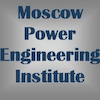
6. National Research Nuclear University MEPI

7. National University of Science and Technology "MISIS"

8. Moscow Institute of Physics and Technology

9. Moscow State Technological University "Stankin"

10. RUDN University

11. Moscow Polytech


12. Moscow State University of Railway Engineering
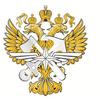
13. Finance Academy under the Government of the Russian Federation

14. Moscow Medical Academy

15. Russian State University of Oil and Gas
16. mendeleev university of chemical technology of russia.
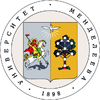
17. Russian National Research Medical University

18. Plekhanov Russian University of Economics
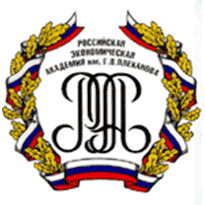
19. National Research University of Electronic Technology

20. Moscow State Pedagogical University
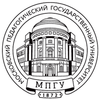
21. Russian Presidential Academy of National Economy and Public Administration
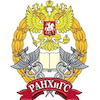
22. State University of Management

23. Moscow State Institute of International Relations
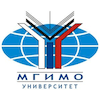
24. Russian State Geological Prospecting University
25. russian state agricultural university.

26. New Economic School

27. Moscow State Technical University of Civil Aviation

28. Russian State University for the Humanities

29. Russian State Social University

30. Moscow State Linguistic University
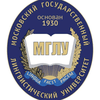
Universities for Mechanical Engineering near Moscow
Engineering subfields in moscow.

COMMENTS
journal papers, many conference, keynote and prestige lectures (including the Nathan Newmark Dis-tinguished Lecture), research reports, books and book chapters, magazine articles, and fi eld investiga- ... Dr. Luigi Di Sarno is Assistant Professor in Earthquake Engineering at the University of Sannio (Benevento), and holds the position of ...
The Journal of Earthquake Engineering is a publication of peer-reviewed papers on research and development in analytical, experimental and field studies of earthquakes from an engineering seismology as well as a structural engineering viewpoint. The Journal combines the three most important ingredients for a successful technical publication; the highest possible technical quality, speed of ...
Earthquake Engineering. Earthquake engineering is an interdisciplinary scientific area, it identifies and solves problems associated with occurrence of earthquakes, with the goal of reducing seismic risks to socio-economically acceptable levels, it requires as it does knowledge and development from geology, seismology, geotechnical, marine and structural engineering, and even architecture and ...
Earthquake Engineering & Structural Dynamics is a civil engineering journal publishing research in structural and geotechnical earthquake engineering. The journal is dedicated to building the knowledge needed to make structures more resistant to earthquakes, making the world a safer place. As the official journal of the International ...
Over the last 35 years, he has carried out research and development in the area of geotechnical and infrastructure engineering, seismic microzonation and soil dynamics, Geotechnical earthquake engineering and has developed innovative technologies in the area of earth sciences, leading to about 500 technical papers, 20 books with Google scholar ...
Bulletin of Earthquake Engineering presents original, peer-reviewed papers on research related to the broad spectrum of earthquake engineering. The journal offers a forum for presentation and discussion of such matters as European damaging earthquakes, new developments in earthquake regulations, and national policies applied after major seismic events, including strengthening of existing ...
Earthquake engineering is an interdisciplinary branch of engineering that designs and analyzes structures, such as buildings and bridges, with earthquakes in mind. Its overall goal is to make such structures more resistant to earthquakes. An earthquake (or seismic) engineer aims to construct structures that will not be damaged in minor shaking and will avoid serious damage or collapse in a ...
The Journal of Earthquake Engineering is a publication of peer-reviewed papers on research and development in analytical, experimental and field studies of earthquakes from an engineering seismology as well as a structural engineering viewpoint. The Journal combines the three most important ingredients for a successful technical publication; the highest possible technical quality, speed of ...
Earthquake Engineering and Resilience (EER) is an international journal publishing traditional and emerging topics in earthquake engineering that contribute to future natural and man-made disaster prevention. With an interdisciplinary scope, the journal welcomes contributions from civil engineering to geophysics, covering research on strong ground motion, earthquake hazards and risks, seismic ...
About this book. This volume presents select papers presented at the 7th International Conference on Recent Advances in Geotechnical Earthquake Engineering and Soil Dynamics. The papers discuss advances in the fields of earthquake engineering connected with structures. Some of the themes include soil structure interaction, dynamic analysis ...
Journal of Earthquake Engineering, Volume 28, Issue 4 (2024) See all volumes and issues. Volume 28, 2024 Vol 27, 2023 Vol 26, 2022 Vol 25, 2021 Vol 24, 2020 Vol 23, 2019 Vol 22, 2018 Vol 21, 2017 Vol 20, 2016 Vol 19, 2015 Vol 18, 2014 Vol 17, 2013 Vol 16, 2012 Vol 15, 2011 Vol 14, 2009-2010 Vol 13, 2008-2009 Vol 12, 2008 Vol 11, 2007 Vol 10 ...
Get 24/7 free consulting. This paper addresses a contemporary issue in earth engineering. The paper specifically evaluates the historical and economic perspective on pyramid-shaped houses and social and environmental changes of the need for pyramid-shaped building in urban areas. The paper also evaluates the solutions to the challenge of ...
Therefore an earthquake of magnitude 6.0 has ten times the wave amplitude of an earthquake of magnitude 5.0, a hundred times the wave amplitude of a magnitude 4.0 earthquakes and one thousand times the wave amplitude of a magnitude 3.0 earthquakes (Disaster Recovery Journal, 1999). The Richter magnitudes are based on a logarithmic scale (base 10).
In a more serious assignment like a thesis or a term paper, you can concentrate on earthquake engineering or disaster management issues. In this article, we've gathered best research titles about earthquake and added top earthquake essay examples for more inspiration! 🏆 Best Earthquake Topic Ideas & Essay Examples
Emilly Scott. 2021-04-07. Earthquake Engineering is the study of a multi-phased process, from finding the earthquake source to portraying the side effects and structural response and concluding the seismic protection measures. The objective of Earthquake Engineering is to help policymakers in reducing seismic hazards.
earthquake, any sudden shaking of the ground caused by the passage of seismic waves through Earth 's rocks. Seismic waves are produced when some form of energy stored in Earth's crust is suddenly released, usually when masses of rock straining against one another suddenly fracture and "slip.". Earthquakes occur most often along geologic ...
Selected Earthquake Engineering Papers of George W. Housner. Sponsored by the Structural Division of ASCE. This volume collects key papers on earthquake engineering by George W. Housner, who more than any other person has been responsible for the remarkable development of this subject during the past fifty years. Included here are the basic research papers which form the scientific background ...
Faculty and Researcher Data and Papers; Civil and Environmental Engineering, Department of; ... The seismic performance of bridges is essential to post-earthquake mobility, as bridges are relied upon to carry goods and people into and out of urban centers after natural disasters. A 2019 Department of Homeland Security (DHS) report assessing the ...
The following is a list of some subject areas describing the scope of the journal: Evaluation of damage to structures and engineering systems resulting from recent earthquakes. New observations of strong motion characteristics and data processing techniques. Seismic risk and hazard analysis of civil infrastructure systems.
500+ Words Essay on Earthquake. Simply speaking, Earthquake means the shaking of the Earth's surface. It is a sudden trembling of the surface of the Earth. Earthquakes certainly are a terrible natural disaster. Furthermore, Earthquakes can cause huge damage to life and property.
In 1954, Elemash began to produce fuel assemblies, including for the first nuclear power plant in the world, located in Obninsk. In 1959, the facility produced the fuel for the Soviet Union's first icebreaker. Its fuel assembly production became serial in 1965 and automated in 1982. 1. Today, Elemash is one of the largest TVEL nuclear fuel ...
Moscow 30. Saint Petersburg 16. Tomsk 6. Below is the list of 30 best universities for Mechanical Engineering in Moscow, Russia ranked based on their research performance: a graph of 269K citations received by 45.8K academic papers made by these universities was used to calculate ratings and create the top.
Buildings with shear walls are much less likely to sway in the direction of their orientation, reducing the likelihood of structural damage. In addition to providing lateral stiffness, shear walls also prevent roof or floor wobbling. If walls are strategically placed within a structure, they may be able to withstand the lateral forces caused by wind and earthquakes. The investigation of the ...
40 Facts About Elektrostal. Elektrostal is a vibrant city located in the Moscow Oblast region of Russia. With a rich history, stunning architecture, and a thriving community, Elektrostal is a city that has much to offer. Whether you are a history buff, nature enthusiast, or simply curious about different cultures, Elektrostal is sure to ...
The theoretical mechanism of the sublimation of uranium hexafluoride are considered. The most contribution to the rate of evaporation of UF6 is introduced by the conductive mode of heat exchange. Various modes of the intensification of the evaporation of uranium hexafluoride during the nitrogen supply in pulse mode to the product mass are investigated. The nitrogen supply results in the ...